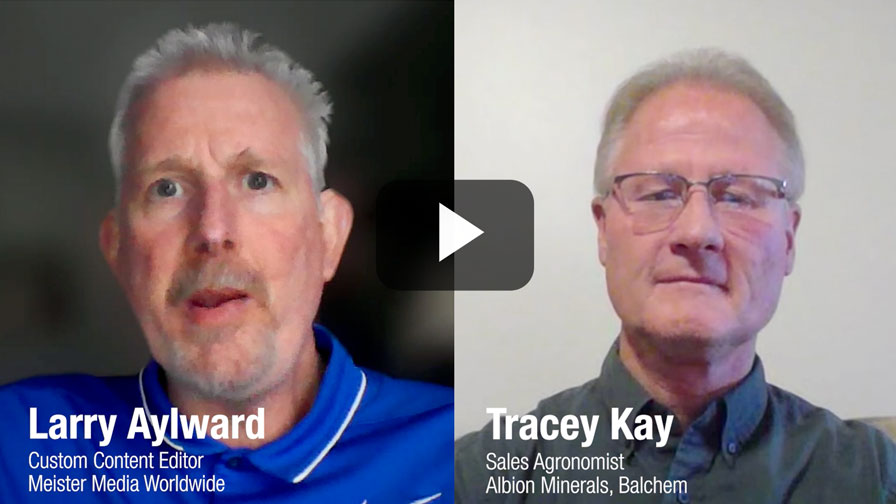The Faces Of Extension: Jim McFerson

 The Extension situation in Washington is “dire,” says McFerson. There are only three remaining Extension tree fruit agents – Karen Lewis, Gwen Hoheisel, and Tim Smith — for 250,000 acres of tree fruit. “Our situation is bad and getting worse,” he says. “But we do have a land grant institution that’s committed to production agriculture.”
The Extension situation in Washington is “dire,” says McFerson. There are only three remaining Extension tree fruit agents – Karen Lewis, Gwen Hoheisel, and Tim Smith — for 250,000 acres of tree fruit. “Our situation is bad and getting worse,” he says. “But we do have a land grant institution that’s committed to production agriculture.”
The traditional Extension model with the county agent has been gone for a long time (4-H, etc.) anyway in the Pacific Northwest. Instead, they have a lot of practical horticultural programs that are ongoing. They are currently working with Washington State University on an endowment campaign. If growers want a top research program, they are being asked to pay for it. McFerson says they are asking for $1 a ton for apples, pear and soft fruit and $4 a ton for cherries. They hope to raise $32 million over 8 years, which would cover: 1) endowed research — 6 chairs; 2) information and technology transfer — locating five new researchers at the Prosser and Wenatchee research stations looking at problems; and 3)research orchards.
Over the past 10 years they have created 13 positions, said McFerson, and this would add 11. “We’ve had a real trajectory in promoting tree fruit and wine grapes, adding a great deal to research component,” he says. “In the Internet Age, you also need transfer technology. If you can’t implement any new knowledge, it really isn’t any good.”
There is a real industry commitment — which is vital in identifying priority areas. There is also a strong commitment by WSU and USDA-Agricultural Research Service. “You must have a public-private partnership to heighten our competitive edge, which is technology,” he says. “We need to be at the leading edge because we’re a high-cost producer.”
Washington growers (and U.S. growers at large) have high costs because labor (50-60%) is the principle cost for fresh-market tree fruit. Other costs that are relatively high are resource costs, such as fuel and water; and regulatory costs such as food safety. “Our producers and processors are becoming more global, so Extension should follow suit,” he says. “We’re working toward a different model. If people think we’re going to have the same old farm advisors and county Extension, they’re nuts.”
Industries need to look real hard at what they do and what they can do, and then establish public/private partnerships. “Growers need to buy in — literally — beyond just taxes. Extension is not a bullhorn to teach the dumb farmers — you need communication both ways. In many cases, the growers are ahead of researchers,” he says. “ It’s the more the growers saying we have this problem. And the Extension guy is plugged into worldwide research. ‘Perhaps this Italian research could have value,’ he might say. There’s no reason in this world of global knowledge, we can’t have that capability.”
The Washington Tree Fruit Research Commission is mandated to support research projects with an Extension component – research without Extension is rather pointless, because it must be applied research to pay off, he says. There are exceptions, however. They mapped the peach genome, for example, and you could certainly say that’s not practical. “Our belief is that by generating knowledge, it would pay off down the road,” he says. “Area wide mating is a good example. It didn’t seem practical at first, but now it’s working better than conventional (codling moth) controls.”
Growers are concerned because they are gaining more of a world view, and they are realizing that our advantage is in research more than anything. Extension is all about applied research, but our limited number of Extension folks are overworked and underpaid. “But I do have faith and optimism,” says McFerson. “I see our products as never having been better, though we have a ways to go.”
One concern he does have is there seems to be increasing support for privatized research. Some growers are so huge, such as Paramount Farms in California, could definitely finance is. “There are folks that say that. But who’s going to put together program to replace Guthion? And food safety – are we really going to rely on private research for that? Also, there is the belief that the less government the better. There are those people,” he says. “In some cases it is kind of scary. Yes, I’m concerned about that, about losing what has made our agriculture great and a great country to live. Part of what has made agricultural progress possible has been public investment in the land grant university.”
While McFerson obviously supports the concept of improving the tree fruit industry through research, and therefore supports the concept of Extension, he’s not sure growers should rally to support it, per se. “To me it’s all about maintaining our competitive edge so our producers remain profitable. Unless we’re clear on that point, all we’re doing is saving institutions. We need an ever more vibrant public-private partnership. Saving Extension is not the right goal,” he says. “There’s a lot of baggage associated with the name ‘Extension.’ Do we want to be in love with the tradition or the name, or do we want to have the impact? We need to work backwards from profitability via technology transfer. We need to think of it in a different fashion.”









